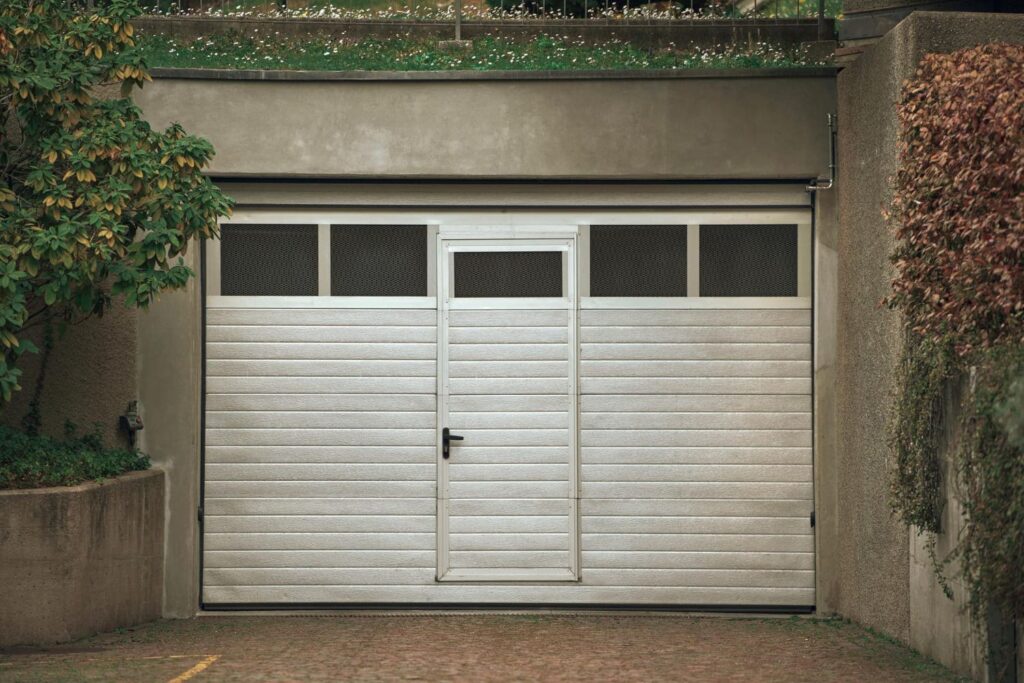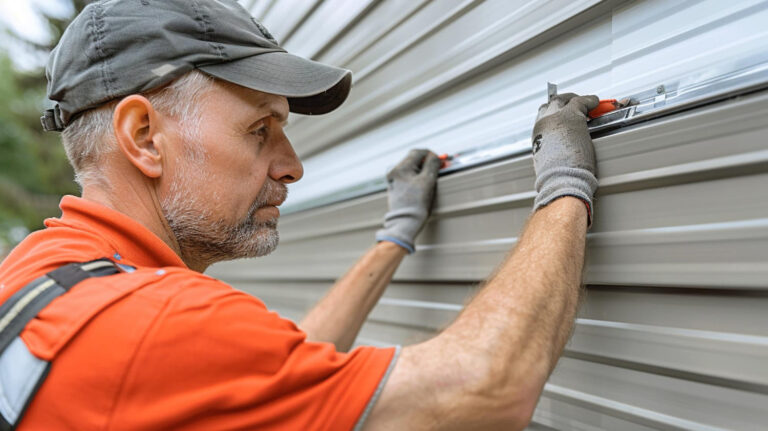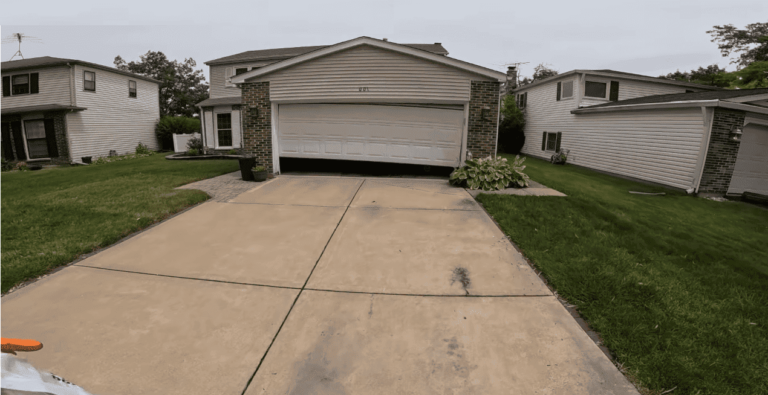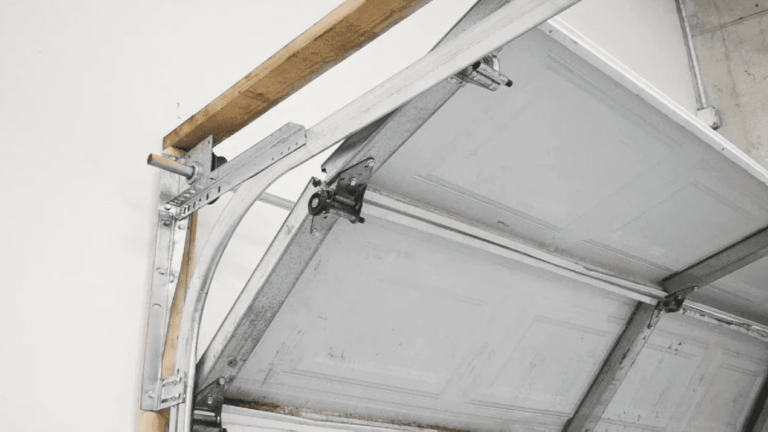Garage Doors with Pedestrian Access present a practical approach to reach your garage without opening the whole door. Though this change could appear nice, it can cause a range of unanticipated problems. Adding a door to a garage door can present a number of difficulties for homeowners not expected from compromising the structural integrity of the garage door to creating balance and insulation issues.
The typical issues with door in garage door are discussed in this article together with some factors to take into account before changing anything.
1. Compromised Structural Integrity
Made as a whole, garage doors equally distribute weight throughout the whole construction. Including a door inside a garage door throws off the equilibrium and could cause the building to deteriorate generally. The additional door results in points of weakness, so with time deformation may result.
Consequences:
- Door Sagging or Warping: As the framework collapses, the door can sag or distort, which would hinder opening and closing. This might also create gaps and improper door fit into its frame.
- Increased Strain on Hinges and Tracks: Added pressure on the hinges and tracks resulting from the imbalance could cause these parts to wear out more quickly, so regular repairs or replacements are more necessary.
2. Loss of Insulation and Energy Efficiency
Many times insulated to preserve energy efficiency by controlling garage temperature, garage doors are Adding a door degrades this insulation, causing drafts, leaks, and higher energy bills. The previous insulation will be disturbed, and cracks surrounding the new door could develop.
Consequences:
- Higher Energy Bills: Loss of insulation causes cold air to enter in the winter and hot air to enter in the summer, therefore increasing the energy consumption as heating and cooling systems try harder to maintain indoor temperatures.
- Increased Moisture and Humidity: Gaps and loss of insulation could let moisture penetrate into the garage, so damaging goods kept inside, rusting tools or automobiles, and fostering mold or mildew on flooring or walls.
3. Disruption of the Automatic Opening Mechanism
Perfect performance of automatic garage doors depends on exact weight and tension calibration. Including a pedestrian door throws off balance and may strain the motor and springs. Early on failure of the door could cause it to lose its smooth operation.
Consequences:
- Increased Strain on the Motor: Added weight or improper weight distribution from the door change can strain the motor too much and result in early on burnout or overheat. This can call for costly repairs or call for motor replacement.
- Spring and Cable Wear: The springs and wires designed to raise the garage door are built to bear specific loads. Faster wear on these parts brought on by the change can provide an imbalance that might break fraying cables or springs requiring more regular replacement.
4. Security Risks
Including a pedestrian door could expose security weaknesses in your garage. Although strong locking methods abound in standard garage doors, the extra door could not have the same degree of security. This opens a fresh, maybe more easily targeted entrance point.
Consequences:
- Weak Locks: The built-in pedestrian door might not have reinforced frames or safe locks, which would let thieves more easily pass through.
- Higher Risk of Forced Entry: Two entrance points raise the possibility of forced entry for robbers, especially in cases when the pedestrian door is not connected into the main security system. To offset this vulnerability, homeowners might have to make investments in updated security systems such more locks or alarms.
5. Aesthetic Impact
Built-in garage doors can throw off the visual symmetry of the garage and house especially if the design clashes with the prevailing style. The extra door would seem out of place or harm the curb appeal, therefore lowering the apparent value of the house.
Consequences:
- Reduced Curb Appeal: From the street, poorly integrated designs can make the house less desirable, which could be an issue for homeowners seeking either preservation or enhancement of property value.
- Potential Decrease in Resale Value: Should the extra door affect the general structural or esthetic appeal of the garage, potential buyers could be turned off, therefore undermining the resale value of the house.
6. Water Leakage Problems
A door could compromise the garage’s waterproofing. Should poor drainage cause water to rush toward the garage door or during a thunderstorm, gaps around the new door could allow water to enter if improperly sealed.
Consequences:
- Water Damage to Interior:Water intrusion could damage any item kept in the garage—including tools, cartons, or vehicles—as well as the floor and walls.
- Rust and Corrosion: Moisture causes rust on metal parts including the garage door tracks, springs, or vehicles kept within. With time, this could result in expensive repairs or replacements.
7. Reduced Durability of the Garage Door
Adding still another door to a garage door reduces its overall lifetime. Especially on the main garage door, which was not designed to handle the additional load, constant use of both doors could lead to fast deterioration.
Consequences:
- Faster Wear on Components: Extra door stresses on hinges, rollers, and tracks speeds up their wear out on components. From this follows more frequent replacements and higher maintenance expenditures.
- Shortened Lifespan: Early failure and need for early replacement could result from the combined stress of the pedestrian door and the extra weight of the garage door opener reducing the general lifetime of the whole system.
8. Increased Maintenance and Repair Costs
Door in garage door provide extra moving components and mechanisms that need for frequent maintenance. Given the system has been altered from its initial design, this not only raises the frequency of maintenance inspections but also the possibility of more costly repairs.
Consequences:
- Higher Maintenance Frequency: The extra door adds more routinely examined and maintained moving components. To avoid problems from developing, homeowners could have to do maintenance more frequently.
- More Expensive Repairs: The garage door system has been changed, therefore repairs may call for specific knowledge or bespoke parts, so complicating the door maintenance process.
9. Balance Issues and Uneven Weight Distribution
A garage door is built to run with a particular weight balance. Adding a pedestrian door changes the weight distribution of the whole door, hence possibly leading to operational issues including uneven lifting, jerky movements, or door stuckness.
Consequences:
- Imbalanced Door Movement: Should the door not open or close smoothly, jerky or uneven motion follows. If this last results in misalignment or damages the door tracks, professional repairs are required.
- Added Strain on Springs and Cables: The unbalance may cause some of the door to carry more weight, hence increasing wear on springs and cables and maybe causing more fast breaking of some of them.
10. Voiding Manufacturer’s Warranty
Modifying a garage door by adding a built-in door could void the manufacturer’s warranty, leaving homeowners responsible for any repairs or replacements that would have otherwise been covered. Most manufacturers offer warranties only on original, unaltered products.
Consequences:
- Loss of Warranty Protection: Homeowners forfeit their right to claim warranty protection for problems developed following the modification. Any damage or malfunction that results after installation would have to be covered personally.
- Higher Out-of-Pocket Expenses: Any future repairs or replacements without the safety net of a guarantee would have to be funded by the homeowner, so over time expenses could be much higher.
11. Pedestrian Safety Risks
Adding a door in garage door especially if the additional door interacts with or impedes the automatic system of the garage door can generate new safety risks. Users could be in risk should the door close suddenly or become caught.
Consequences:
- Risk of Injury: Should the change cause the door to malfunction, it may close without warning, therefore injuring someone standing close by or walking through it.
- Added Safety Features Needed: Homeowners may have to include extra safety elements, such sensors or automatic stop systems, to stop mishaps and hence increase the total cost of the installation.
12. Building Code Violations
Many times, including a door in garage door entrance to a garage door runs against local building codes or homeowner association guidelines. Such changes could call for permission, so failing to get the required approvals might lead to fines or required door removal.
Consequences:
- Fines and Penalties: Should the change fail local construction codes or if appropriate permissions are not obtained prior, homeowners could be liable.
- Forced Removal: Sometimes homeowners may be obliged to remove the pedestrian door and bring the garage door back to its original state, therefore incurring more expenses and hassle.
13. Complex Customization and Lack of Standard Parts
garage doors with doors in them can call for unusual modifications that could complicate replacement parts. Homeowners may have to pay more for specialized components and longer wait periods should parts fail or wear out.
Consequences:
- Limited Availability of Parts: Custom doors and components could not be readily available, thus special orders—which could be more expensive—may be required or delayed repairs postponed.
- Longer Repair Times: Expert repair techniques and original parts help to cut the time needed to remedy problems, so depriving homeowners of a working garage door for long periods of time.
Although adding a door to a garage door would seem practical, the breadth of problems it generates would surpass any benefits. Homeowners should give much thought to the risks from voiding warranties to compromising structural integrity to increasing maintenance costs before making this adjustment. Mostly avoiding these potential issues rely on careful planning and professional advice.





